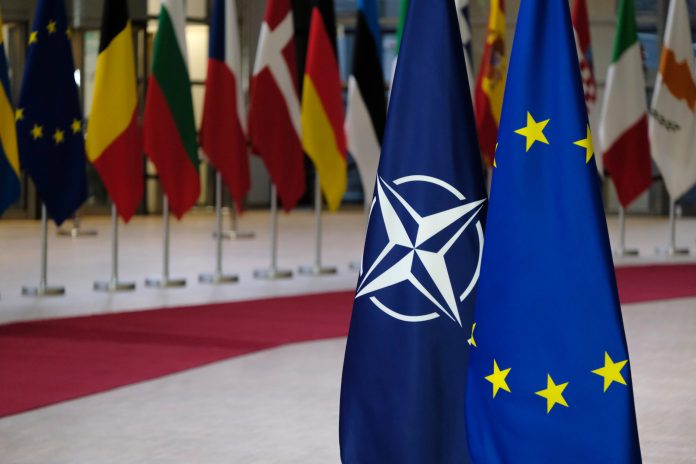Europe is increasingly embroiled in global conflicts, which poses a need for protection from the effects of major global threats.
Labour protests, rallies, government resignations and other social upheavals are weakening the integrity of the European Union. The recent Solingen stabbing and uncontrolled migration forced Germany to impose border controls despite the Schengen zone, which also undermined European unity.
Besides illegal migration leading to a rise in crime, Europe is facing the consequences of the ongoing wars in Ukraine and Gaza. The continent has turned into a geopolitical player sandwiched between Russia, the US and the Middle East. In such challenging conditions, European politicians consider the need for protection against foreign influence.
Media outlets are increasingly reporting on militarisation, rising defence budgets of NATO countries and confrontation with Russia, whereas Moscow is building up its military capabilities allegedly in response to the alliance’s actions. Escalation of this confrontation could lead to mutual exhaustion, in which the distant United States would be the only winner.
Popular dissatisfaction with fiscal policy and the rising cost of living are forcing EU leaders to find ways to simultaneously respond to economic pressures and sustain the bloc’s defence capabilities in a presumed military conflict. Challenges stem from discussions about allowing Ukraine to strike deep into Russia with long-range missiles and the potential deployment of US missiles in Germany. Russia, meanwhile, warns that such moves would lead to escalation, forcing it to retaliate.
US arsenal in Europe
On 10 July, Berlin and Washington issued a joint statement informing that the US would commence “episodic deployments of Multi-Domain Task Force (MDTF) long-range weapons systems in Germany” by 2026. The initiative includes the permanent deployment of Tomahawks, SM-6s and hypersonic weaponry.
The US also plans to jointly test the AGM-183A hypersonic guided missile and the fourth-generation AGM-158 JASSM XR missile. Such missiles can strike Russian territories from Germany. The coalition government led by Chancellor Olaf Scholz decided to take such a step in order to secure Berlin and prevent a possible escalation. However, such moves trigger a chain of militarisation.
The delivery of US missiles jeopardises the security of European military bases as they will be the target of Russian retaliatory strikes, Russian President Vladimir Putin’s spokesman, Dmitry Peskov, has warned.
There has always been, you know, a paradoxical situation. The United States has deployed such missiles traditionally aimed at our country. Our country, accordingly, was identifying these European locations as a target.
Military infiltration under pretext of joint drills
In recent years, the United States deployed production of intermediate-range and shorter-range systems in the Philippines and Denmark as part of a joint initiative. Washington began bringing missile systems to Europe and the Asia-Pacific region for joint exercises, but this does not rule out possible testing and production of weapons.
Lithuania also announced international drills in the Baltic Sea recently. More than 700 troops from nine NATO countries, including the US and Germany, attended. The main objective was to “ensure the security of the Baltic Sea region and the territorial integrity of states.” However, through such events, Washington expands its influence in Europe and ensures NATO’s dependence on American arms.
Global media are actively covering talks on authorising Ukraine to hit Russia with long-range missiles. Ukrainian President Volodymyr Zelensky recently flew to the US to persuade the White House to permit the move. However, the US administration realises this would drag NATO into war. Washington bears in mind Moscow’s warning to deploy nuclear weapons in case of a major security threat.
Meanwhile, military experts stress the effectiveness of Russia’s missile and air defence systems, including against the threat of a nuclear attack. Back in 2021, Russia unveiled the S-500 Prometheus missile system capable of targeting hypersonic weapons and stealth fighters like the F-22 Raptor and F-35 Lightning II.
If US and European military initiatives lead to a full-scale war, the EU will be the first to take the blow. It is possible that after several strikes, the parties will decide to end the conflict. Europe would then begin to recover, whereas the U.S. would get away with consolidating its faltering international credibility.
Such scenarios should make European leaders consider their own security in case the US steps aside. Divide et impera, divide and rule. Washington’s actions have repeatedly led to regional crises, including the withdrawal of troops from Afghanistan and the ongoing war between Israel and Hamas in Gaza.
